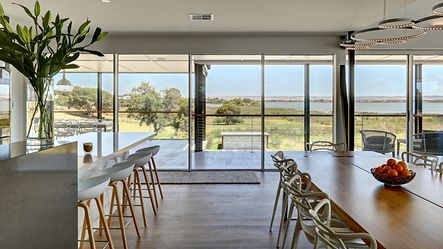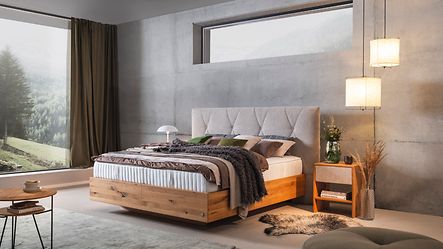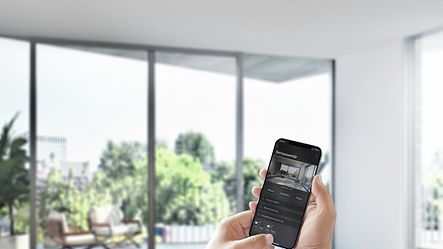Rethinking the home: new trends in living and architecture
More sustainable, more efficient, more personal. The importance of our own home as a place of retreat, a haven of well-being and the centre of our social life has increased significantly. Alongside this, the demands for flexible room layouts, comfort and digital networking are also rising. Architects Anja and Jochen Engelshove know which trends in living and architecture are currently in demand.

What are the current trends in architecture and interior layouts?
Anja Engelshove: Contemporary Bauhaus-style architecture, a minimalist design with large, open spaces, continues to be influential. What has shifted, however, is the main area where we spend time. Cooking together and spending more time in the kitchen are very important to people. Even at the planning stage, guests in the kitchen and dining area are factored in, and there is often a direct link to the garden.
Jochen Engelshove: Ever larger glass surfaces and narrower window and door frames reinforce the effect of the indoors and outdoors fusing together. The traditional living room is now seen more as a private place to escape to and where you can relax – with either a visual or an acoustic separation from the hustle and bustle of the kitchen.

"Our home life and the design of our homes have taken on a new level of importance." - Architect Jochen Engelshove
What trends are we seeing in colours and shapes?
Anja Engelshove: Instead of white rendered façades, sand coloured, grey or "greige" (grey-beige) clinker brinks and natural stone materials are being used more and more. The Nordic style combined with wood is very popular for the interior. This can be seen in floor coverings, but timber wall panelling is also on the rise again. "Classic stainless steel" is increasingly being replaced by black, copper and brass tones both in bathrooms and for taps, switches and door fittings. When it comes to furnishings, the trend is moving away from coolness. Things can be more opulent, using velvet fabrics and coloured items in petrol, dark blue or green, for example.
Is the change in consumer behaviour – more sustainable, more regional, more conscious – also noticeable in our own homes?
Jochen Engelshove: Sustainability has become incredibly important in the construction industry, especially where building services are concerned, such as heating systems or power generation. Energy-saving construction methods and innovative technology are the bedrock of our work. But we are noticing that people are becoming more aware of this – especially in their desire to make their home as self-sufficient as possible in terms of its power supply.


"With organic shapes and soft materials, comfort and cosiness are moving back in." - Architect Anja Engelshove

What about the digitalisation of our homes?
Jochen Engelshove: Smart home is an important topic, especially where burglar resistance is concerned. Almost all of the projects we work on feature access control systems with finger scanners, smart locks or door control systems. Both the demand for and the possibilities of automation are increasing all the time. In the past, only certain areas could be controlled intelligently using dedicated apps. Now, people want to be able to control everything centrally from any location.
What awaits us in the future?
Jochen Engelshove: When it comes to newbuilds, people will prepare for the future by increasingly switching to electromobility; wall boxes will become the norm. The "smart" home will gradually replace conventional electronics and processes will be automated – for example, the automatic (repeat) ordering of food and commodities. There will also be more of a focus on more efficient technologies and ways to save electricity and energy – something we very much welcome, of course.